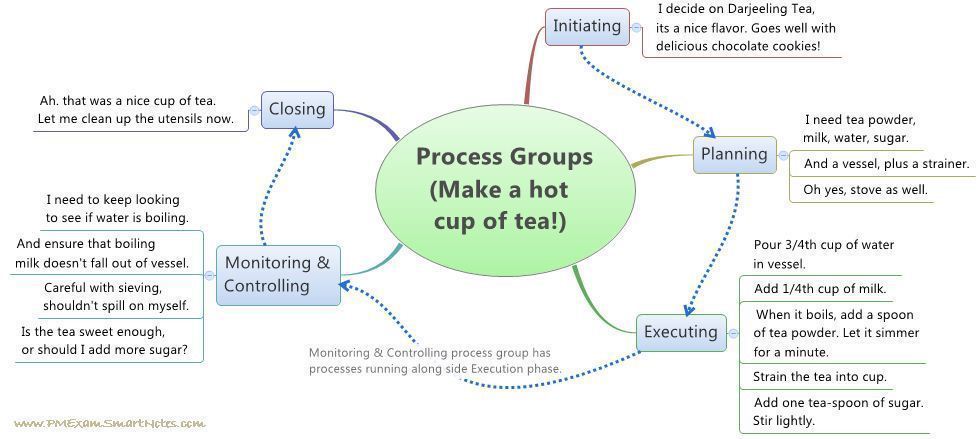 How comfortable do you feel about your understanding of PMBOK so far?
How comfortable do you feel about your understanding of PMBOK so far?
For a long time I struggled to get a ‘hang’ of PMBOK. I knew that irrespective of which other study resource(s) I used I must go through PMBOK few times. But none of those resources really taught me how to get a hold on PMBOK’s contents. In this two part post series I will share my key findings (I’d like to call Ninja Tips 🙂 ) that have helped me do just that.
It is absolutely critical that you remember the names of all knowledge areas, process groups and processes and know which KA and PG each of the processes fall in. This is so important that I am going to repeat it –
It is absolutely critical that you remember the names of all knowledge areas, process groups and processes and know which KA and PG each of the processes fall in.
If you are able to recall these at will, you can feel so much more confident about overall PMP study.
The good news is that you can get this understanding within 1-2hrs of overall effort spread over only few days. As little as 10-15min every day is all that you need! Here you go!
Step 1 – Know your Process Groups
You pretty much should know the process groups names by now. If not, no worries, understand this example below.

- Initiating: You decide that you want to have coffee.
- Planning: You put together the necessary vessels, sieve, sugar, tea powder, milk and filtered water.
- Executing: Put the vessel on stove, pour water, boil it, add tea powder, milk and sugar. Stir as needed, and sieve into the cup.
- Monitoring and Controlling: Make sure you are adding right quantity of water, tea powder, milk and sugar. Take caution to not over-boil the content. While sieving ensure that tea doesn’t spill over you.
- Closing: Throw out the left-over tea powder. Do dishes.
Step 2 – Know your Knowledge Areas
Let us now see how you can remember the knowledge areas.
Remember this mnemonic (or create a wacky, silly, or even ‘sexy’ one yourself). It is all about creating something out of the ordinary that your mind finds it easier to recall.
“Integrating Scope and Time Costs Our Quality Resources to Communicate with the Risk of Procuring Stakeholders“.
Do you see 10 knowledge areas in the right order?
Step 3 – Know your Processes
Now the final part – processes under each knowledge area and process group.
Everyday, for first 10 minutes of your scheduled study period, open a Excel spreadsheet and replicate the table 1-4 from page 25 of PMBOK 6th edition. As you type in get the sequence of processes across process groups as well as across knowledge areas.
After first 3-4 days, try to create table without looking into PMBOK. If you can’t recall, refer to PMBOK by all means.
Over several attempts you will have this by-heart. Know that this is the first thing you write before the exam starts as part of your brain-dump. Don’t worry if you are not able to get the whole table even after several attempts. Just try to understand the sequence of processes as you write them. Tame your brain into ‘getting it’ by repeating the exercise every day. It is important to write consciously and not mechanically.
Soon you will start identifying certain common characteristics such as –
- All planning processes start with a process of the type “Plan [KA] Management”
- Most of the monitoring and controlling processes are of the type “Control [KA]” or “Manage [KA]”
- Initiating has just 2 processes and and Closing process groups has just one – which means you need to study them REALLY well to cross the small passing % threshold to get Above Target score in these 2 domains on the exam
and so on.
This is your brain making connections.
That’s about it. Do these without fail and within few days you will see your confidence level surging up. In the next post I will write about ways to get most out of PMBOK study in the easiest way.
Write your experience/results to me or leave in the Comments below.
[Image courtesy: www.WikiHow.com]



